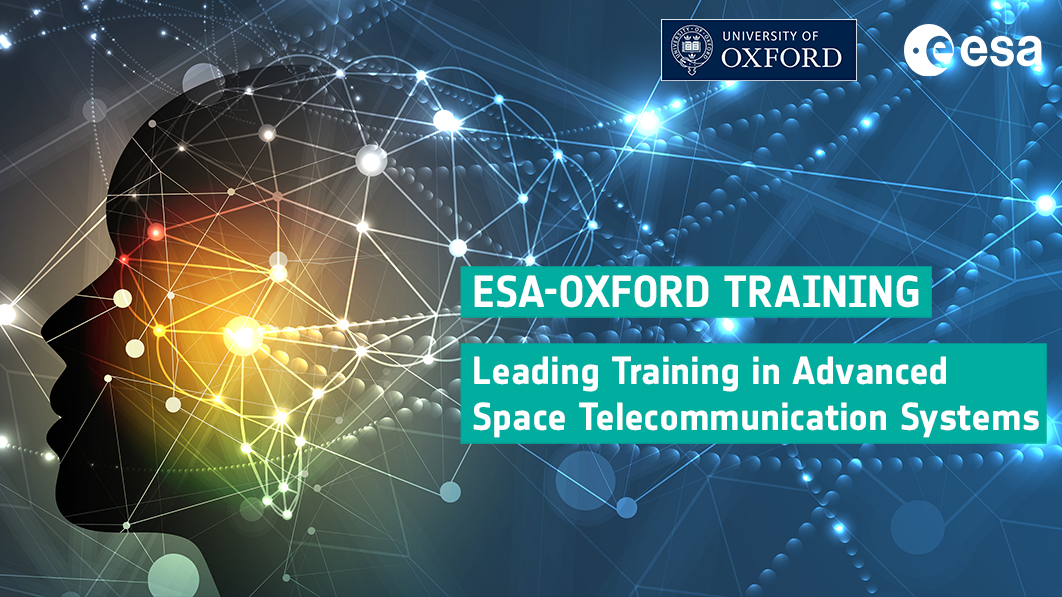ESA collaborates with Oxford University to deliver online Satellite Optical Communications course
A team of experts from the European Space Agency (ESA) and Oxford University are working to deliver a 3 half day course in May, giving an introduction to satellite optical communications. Aimed at professionals who are interested in a comprehensive overview of the fundamentals of satellite optical communication, this introductory online course will give participants a thorough grounding both in the subject and the opportunities it brings for the future. Whilst this is not the first time ESA and Oxford University have collaborated to deliver online training, this will be the first course to run since the beginning of the pandemic.
The tutors on the course are all highly experienced experts in their fields and will be giving attendees broad ranging insights into all aspects of optical satellite communications. Students will be introduced to the challenges that need to be resolved in order to make optical communications a reality and will learn how ESA is developing technologies with European and Canadian industry to make this happen through the ARTES (Advanced Research in Telecommunications Systems) programme.
Dr Zoran Sodnik is the Optical Communication Technology Manager in the Telecommunications and Integrated Applications (TIA) directorate at ESA. His presentation will focus on the technical challenges for optical satellite telecommunications including:
- optical transmission through atmospheric turbulence
- inter-satellite links (LEO-GEO) and constellations
- ultra-high data rate optical feeder links
Luca Maresi, Lead Optical Engineer at ESA and the tutor on the Technology Management module, believes that understanding the basics of dealing with innovation, change management and technology obsolescence should be central to engineering training.
Speaking of the importance of the course subject matter, Dr Maresi explains "Space technology development is evolving at a breath-taking pace, Now, more than ever, we need to proactively anticipate technology evolution and disruptive technologies. Space is an unforgiving technology arena where flaws are costly ad can't quickly be resolved. There is no room for improvisation, especially in the 'New Space,' where the rule of the game is return on investment of large capital investments. Understanding the dynamic forces that bring new products and technologies into place will provide students with a vital methodology to anticipate changes and to stay ahead of the game."
Elodie Viau, ESA Director of Telecoms and Integrated Applications, said "following the success of the collaboration between ESA and Oxford University in advanced courses, we are pleased to have developed a programme for Optical and Quantum Communication, which is one of the Strategic Programme Lines of my Directorate."
Applications are now open - find out more and apply online via the Oxford University website at Satellite Optical Communications (online) | Oxford University Department for Continuing Education.



